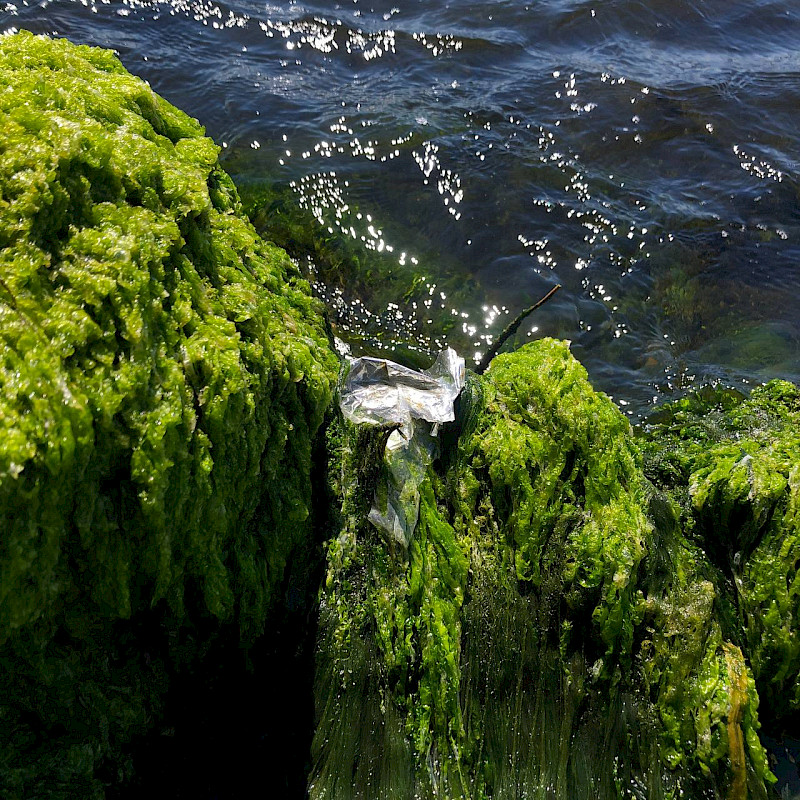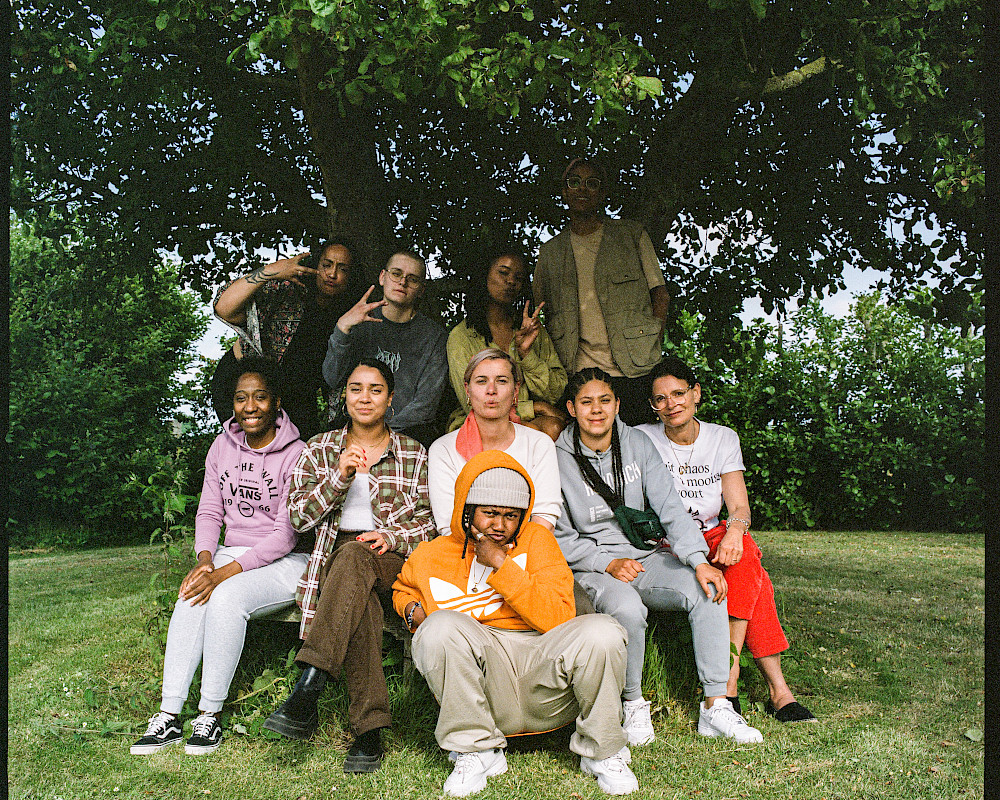8
min read

"I still often reach back to the methods we developed during the project, although in making my own music there is less of a sense of portraying ‘reality’"
In her music and sound work, Amsterdam-based artist upsammy (the artist name of Thessa Torsing) has a unique, aesthetic sense of spatiality and of the blurred divide between the synthetic and the organic. She takes inspiration from the rhythms and vibrational qualities of her surroundings. After releases on several labels and two albums on Nous’Klaer (’Wild Chamber’, 2019) and Dekmantel (’Zoom’, 2020), upsammy is releasing ’Germ in a Population of Buildings’ on renowned label PAN in 2023. ’Germ’ is an album rooted in her ’interest for ambiguous environments in constant shift, and the feeling of discovering strange patterns in different ecosystems’.
In 2021, upsammy was the first artist to take part in Het HEM’s Close Range artist residency, in which we invite musicians to live and/or work in our building and develop multidisciplinary projects in order to experiment and explore the depth of their practice. Together with Andreas Tegnander and Nathan Marcus, upsammy conceived the experimental artistic research project ‘Sound as a Malleable Terrain’, in which they explored the Hembrugterrein as an instrument. Through research into the temporal patterns of the area and experiments with the materiality and sonic qualities of the terrain, different ways of creating a living sonic terrain came into being.
We have asked upsammy to prepare a downloadable sample pack of sounds collected and tinkered with during the Sound as a Malleable Terrain project. You can find the sample pack here. We’d love to hear what you make with these samples!


Het HEM: Hi upsammy, I hope you are well. Back in 2021, you were one of the first musicians in residence at Het HEM. Can you tell us a bit about the project Sound As A Malleable Terrain that you did with Nathan Marcus and Andreas Tegnander?
"It felt like we were archaeologists trying to uncover hidden rhythms and vibrations on the terrain"
upsammy: I started this project because I wanted to experiment with different ways to make a place ‘sound’, in this case the Hembrugterrein. It was very interesting to work together with Nathan and Andreas because we all have different approaches to sound: ranging from a more sculptural and spatial approach to a more temporal and musical approach. During our project, we focussed on ways of distilling the temporal and material qualities of the terrain and used these methods to make a composition. In the end, it felt like we were archaeologists trying to uncover hidden rhythms and vibrations on the terrain, using the locally recorded samples to play these rhythms. We were listening to history, but also really hearing the present to subsequently try to predict the sound of the terrain. The title of the project relates to this shapeshifting of a place over time.
HH: Did the project continue after the residency?
upsammy: The project did not continue in the form it took place initially. But I think all of us have used the ideas and methods generated here to make new music or as a way to research a certain environment.
HH: How does the approach in SAAMT relate to your way of working in your own practice? Do you collect many elements, or do you search for specific sounds?
upsammy: I still often reach back to the methods we developed during the project, although in making my own music there is less of a sense of portraying ‘reality’. It is more of a layering of different locations, morphing them with each other, sometimes disrupting them on purpose, with a more personal aspect too. Before doing this project, I would usually collect sound as just a ‘hit’, triggering a sound in the environment somehow to later use as a sample to make rhythm with. But through SAAMT, I came to realize that it’s very interesting to listen for any pre-existing rhythms; this requires you to listen more closely and at more length of course. I think that’s a nice way of relating to the environment.
HH: How long does a sound or a field recording ferment until you use it? How does it compare at that stage to its original form?
"The original space/place is lost when repurposing them like this, but together they form an interesting new timeline or space"
upsammy: I often start right away with using it; I guess there is some sort of excitement of recording something new. But I also come back to old recordings often, using them to make new samples or remodelling them to a certain extent so they sound new again. I also like to layer them or to use very small parts of different recordings lined up after each other. So you hear 5 spaces in one beat or feel that you are quickly moving through different places. The original space/place is lost when repurposing them like this, but together they form an interesting new timeline or space.
HH: In SAAMT, you used sound as a means to define space, but space naturally also shaped sound. How significant is the source environment of the space or the landscape you record in to the form it eventually gets?
upsammy: Space is important in the sense that it gives a context to the sound. There is something to be told with the environment you choose or happen to be in. However, the actual space colours the sound, but where that space is is often unclear when listening to the sound. In this case, a collection of field recordings become your own personal sonic map, with some elements that are recognizable to other people. For my latest album, I approached my field recordings a little bit like this. But I feel there is also a potential limit in telling the story of a certain place, like we did with SAAMT.


HH: How do you choose where to make field recordings?
upsammy: Sometimes it is a very conscious decision, such as when I go to a place with a unique spirit that I won’t be able to visit again. It can also be more random, like when I happen to stumble upon a place where the sounds I find surprise me. These elements of discovery and curiosity usually result in the most interesting sounds: there is some playfulness to it because there are no preconceived notions about this location. When stumbling upon a random place, it is often the materiality that attracts me, so I explore very metallic surfaces or bricks falling apart.
HH: What are you up to now? We heard you are also studying landscape architecture. How does this relate to your music practice? Do you see music or musical potential in a landscape?
upsammy: I decided to start studying landscape architecture during my residency at Het HEM actually. I was very much interested in the spatial structures in the environment and how they relate to the sonic ones. How the physical world is organized inspires me musically and also the other way around. Landscape architecture relates to my music in the sense that I approach my music as a system of layers, much like in landscape architecture. There is a soil, flora & fauna, archaeological artifacts, human-built elements, different time scales. In a way, you can approach a frequency range as this vertical layering of the environment.
"I approach my music as a system of layers, much like in landscape architecture"
HH: Did some of the recordings you made in and around Het HEM end up being used in your music?
upsammy: Yes they did. I used sequences of some of the recorded rhythms on the terrain at different tempos. So for example, singing birds are sped up, followed by the sound of rain, then followed by the slowed-down sound of rustling leaves. To use small snippets of all these rhythms in quick succession creates very interesting sonic effects. Sort of like you are traveling through time.
HH: Your interest in ambiguous environments and discovering patterns in different ecosystems are mentioned as elements in your latest album, Germ in a Population of Buildings, on multi-disciplinary record label PAN (out on May 5th, 2023). Can the album be listened to as an encompassing collection of environments?
upsammy: Yes, certainly. I feel that the tracks are little environments on their own, sort of morphing into each other and merging with a sense of ‘self’. They are trying to break the boundary between the inside and outside, the self and the environment.











